Abstract
Current methods to establish the duration of toxoplasma infection in pregnant women and for the diagnosis of toxoplasmosis in the neonate or HIV infected patient have significant limitations. We assessed the precision of a commercial ELISA for the detection of toxoplasma specific IgG and adapted the assay to measure avidity using an elution agent washing step. The sensitivity and specificity of the ELISA were 100 and 75% respectively and optimal measurement of avidity was achieved using 6 M urea as the elution agent. Toxoplasma lymphadenopathy of less than 3 months duration was associated with low avidity specific IgG but some discordant findings were recorded. Serial measurement of IgG avidity assisted the distinction between actively produced antibody in infants with congenital toxoplasmosis and passively acquired antibody of maternal origin in uninfected babies. There was no significant difference between avidity levels in HIV infected patients with or without cerebral toxoplasmosis.
Full text
PDF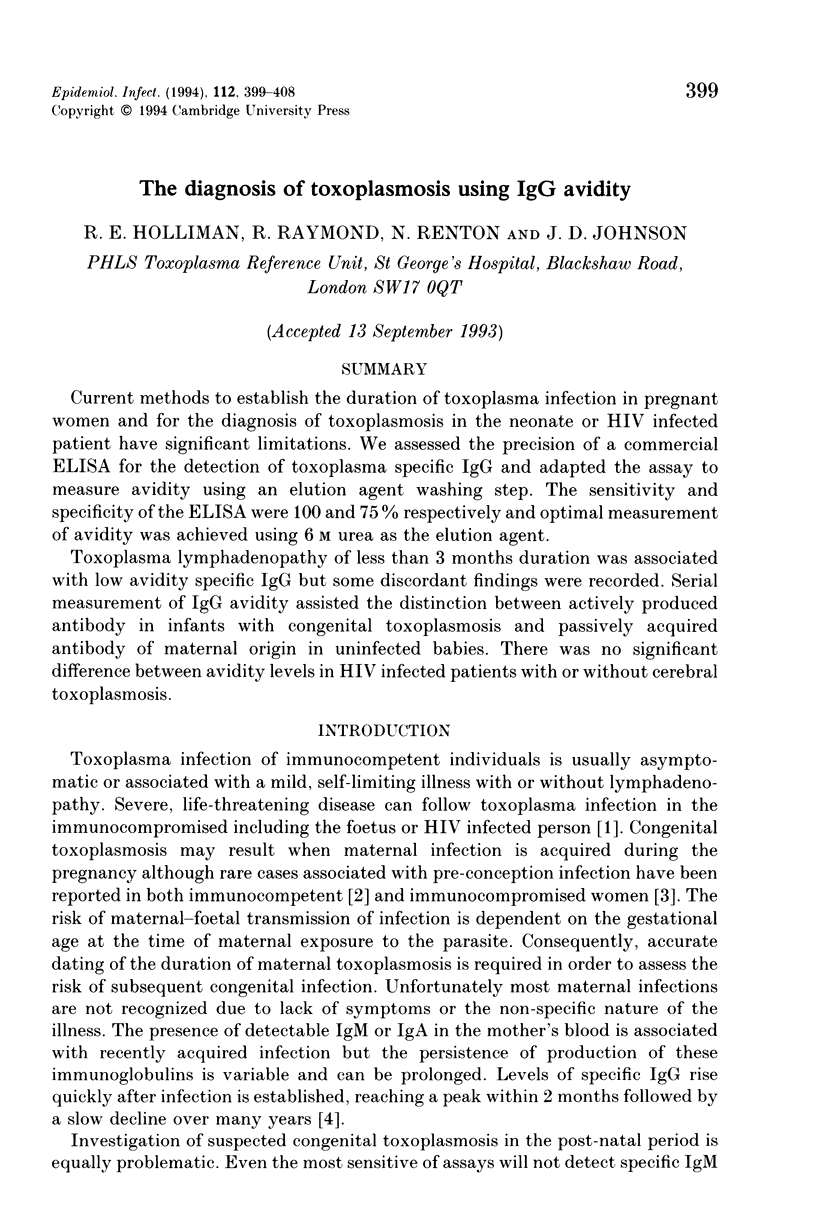
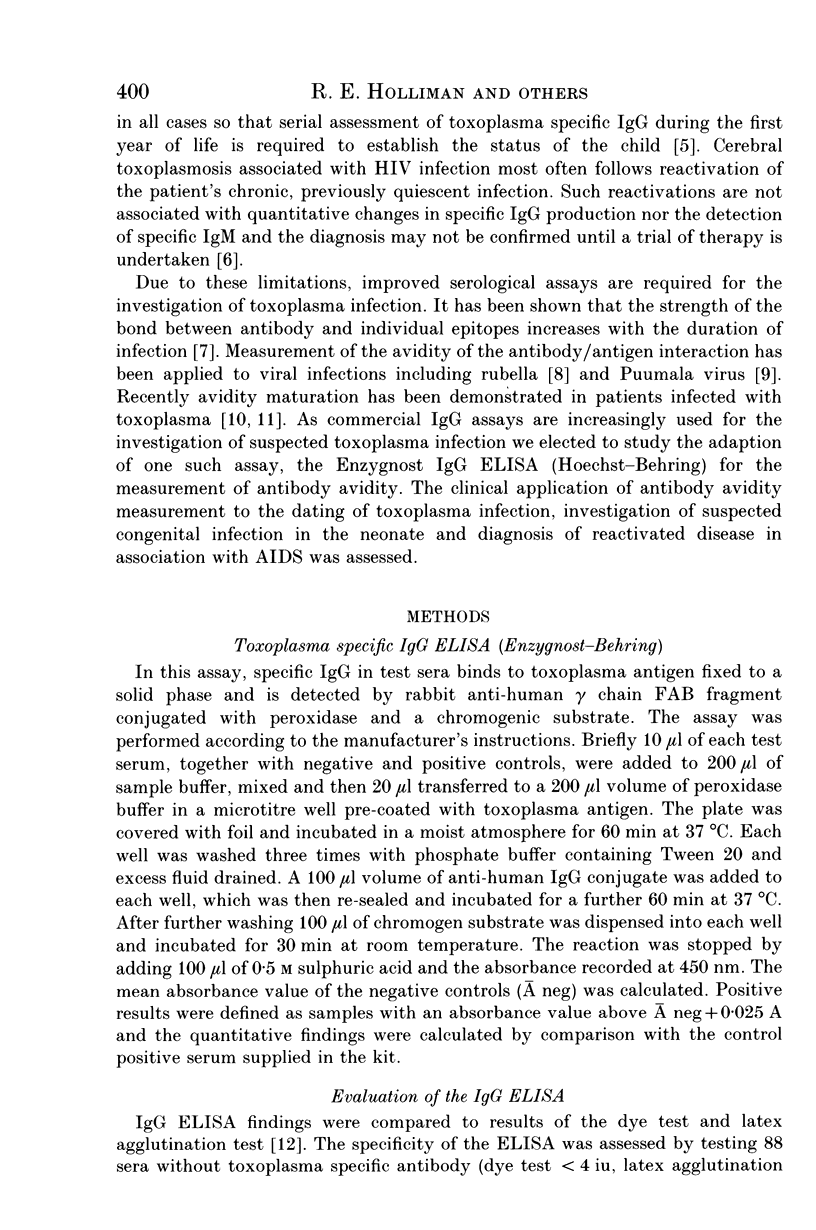
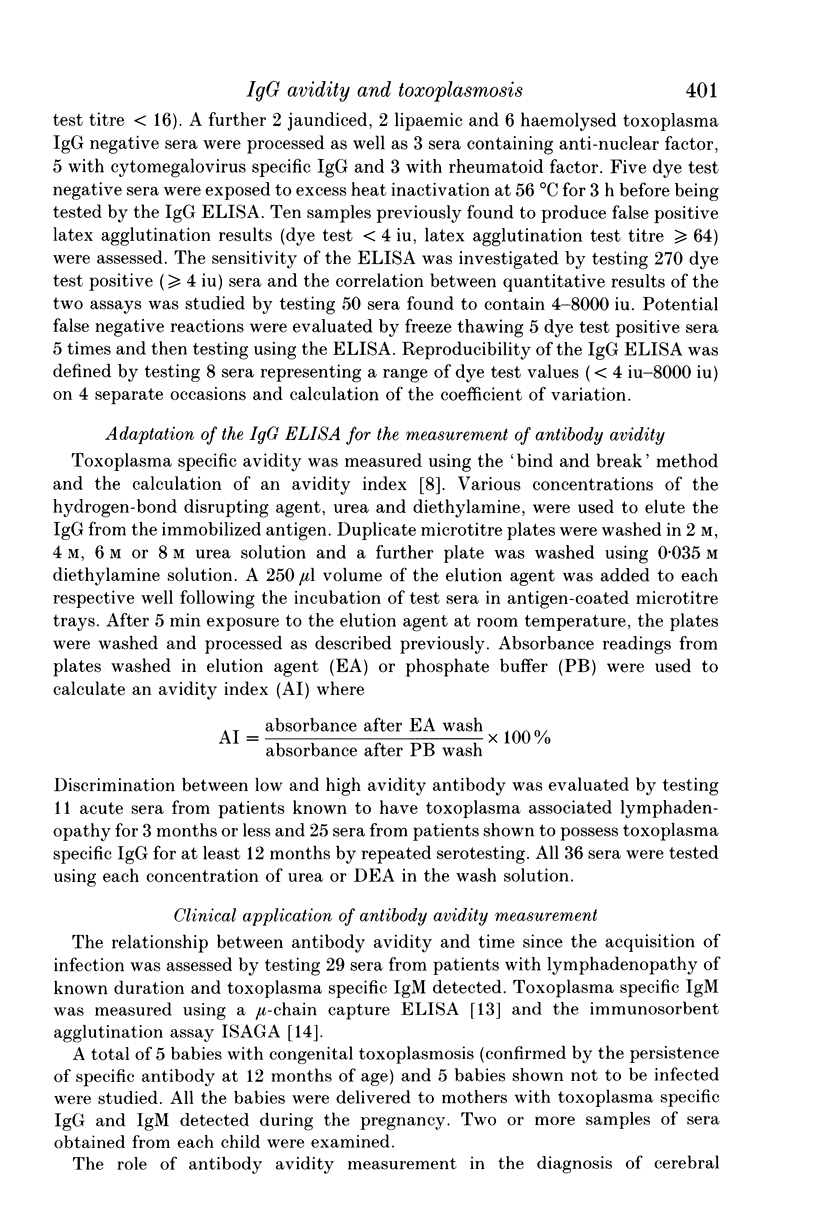
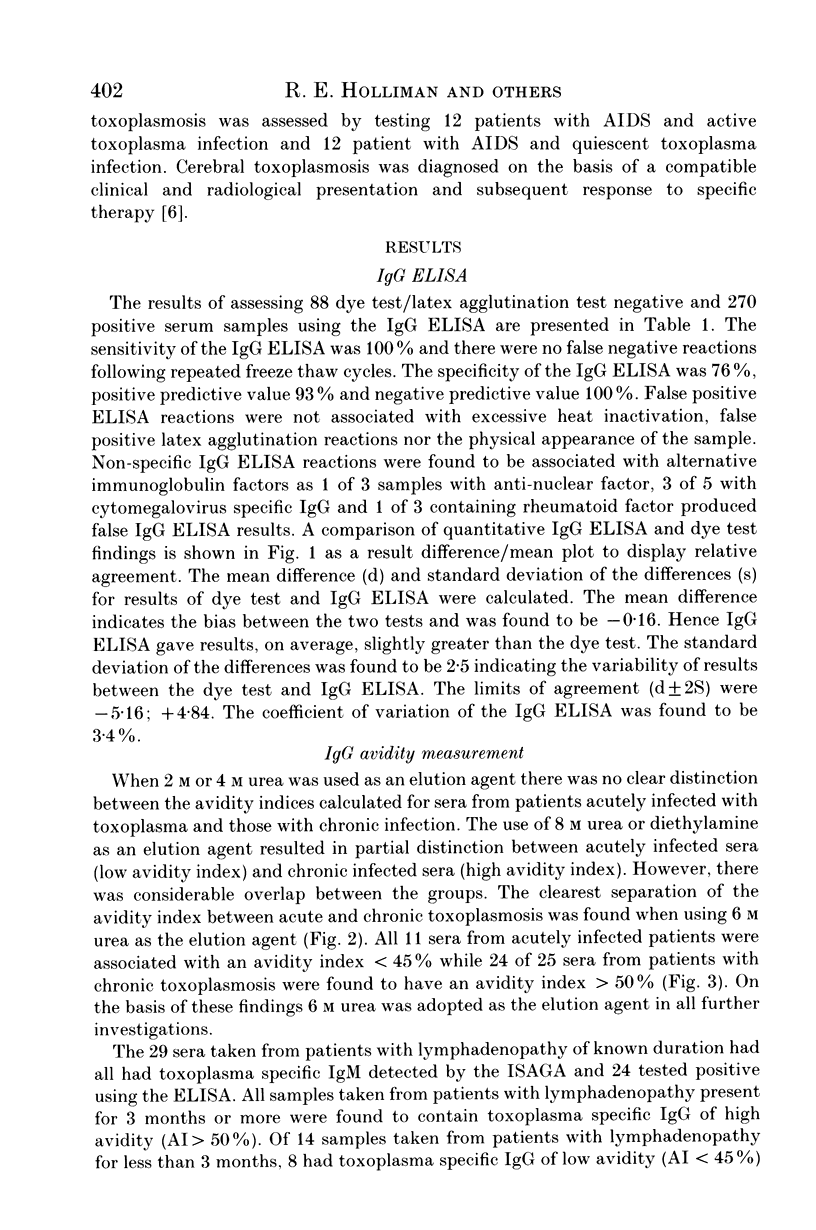
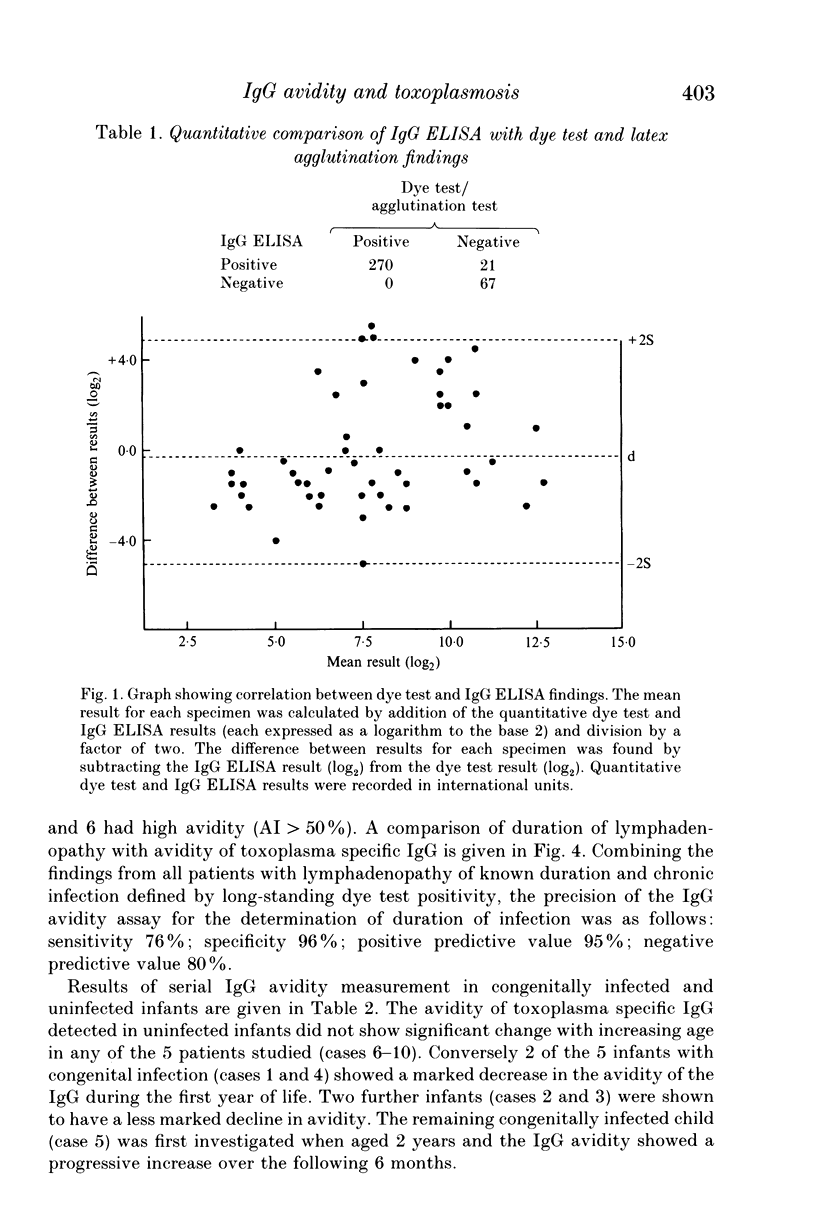
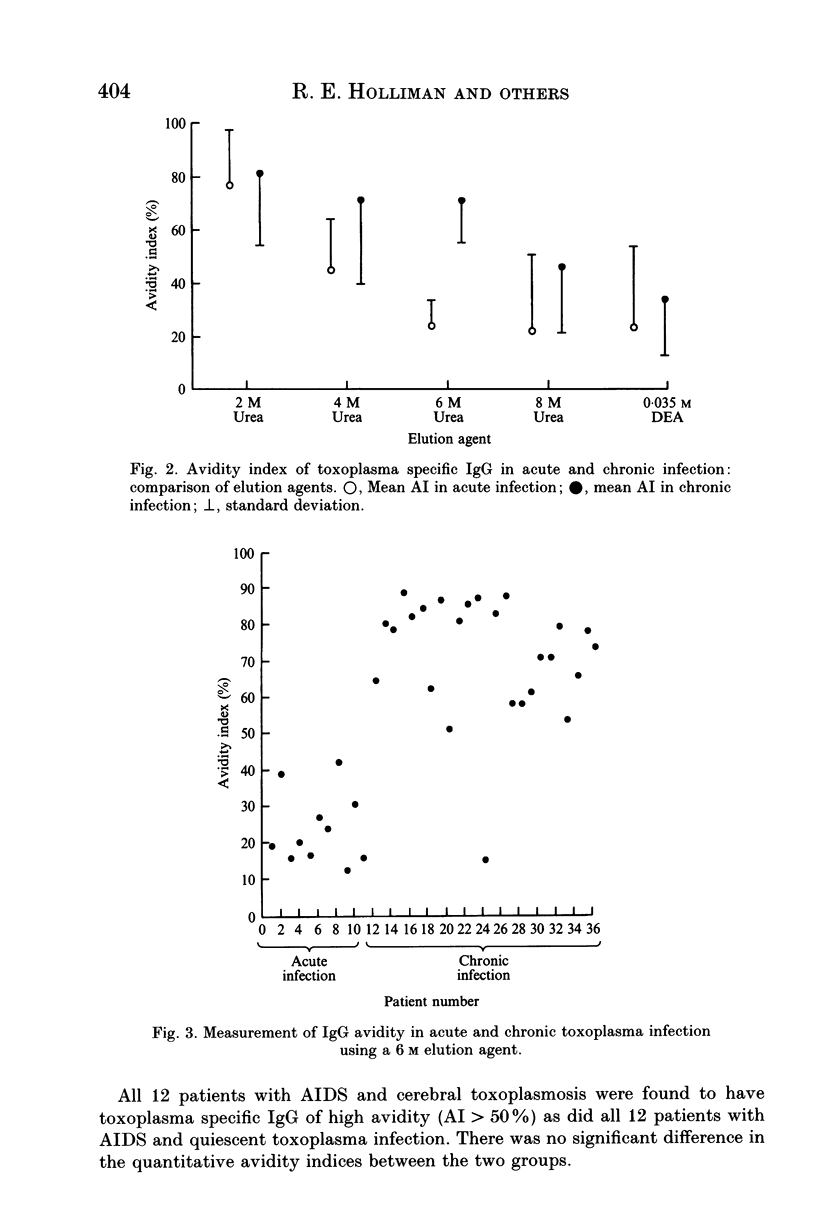
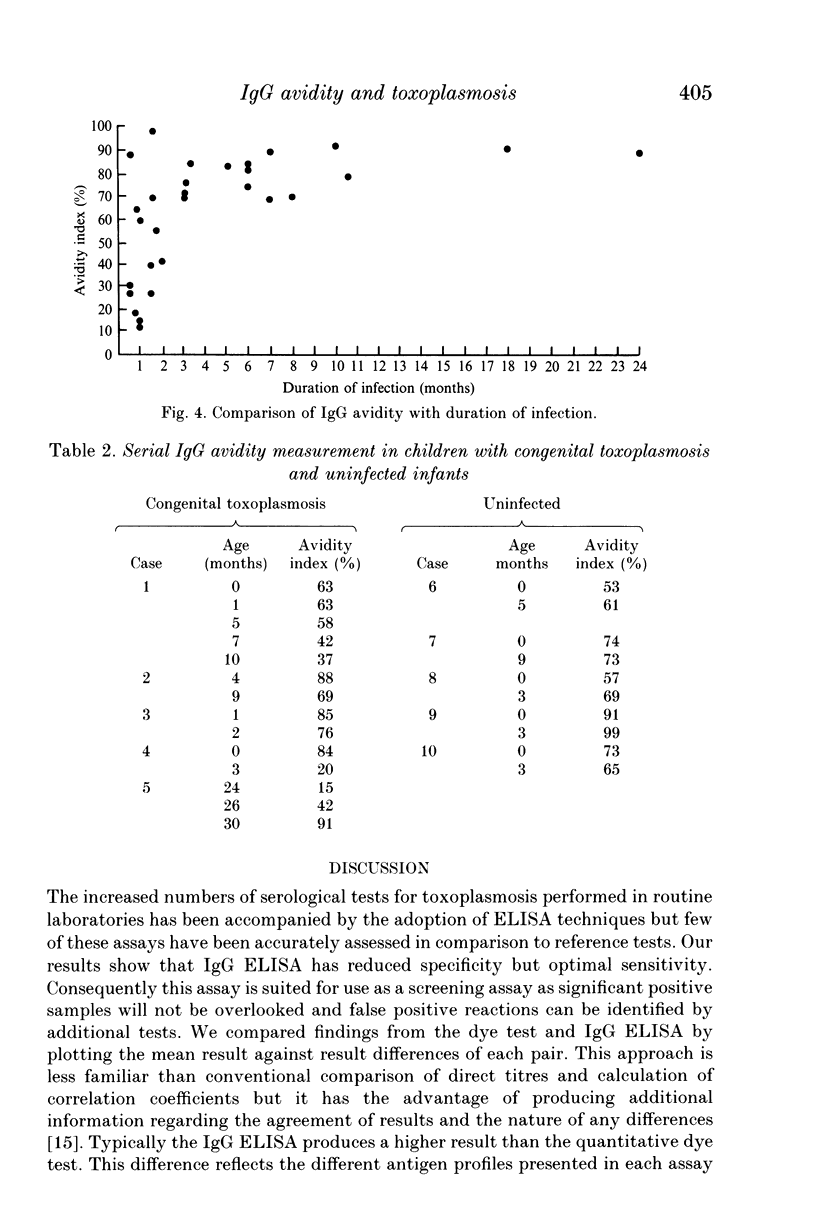
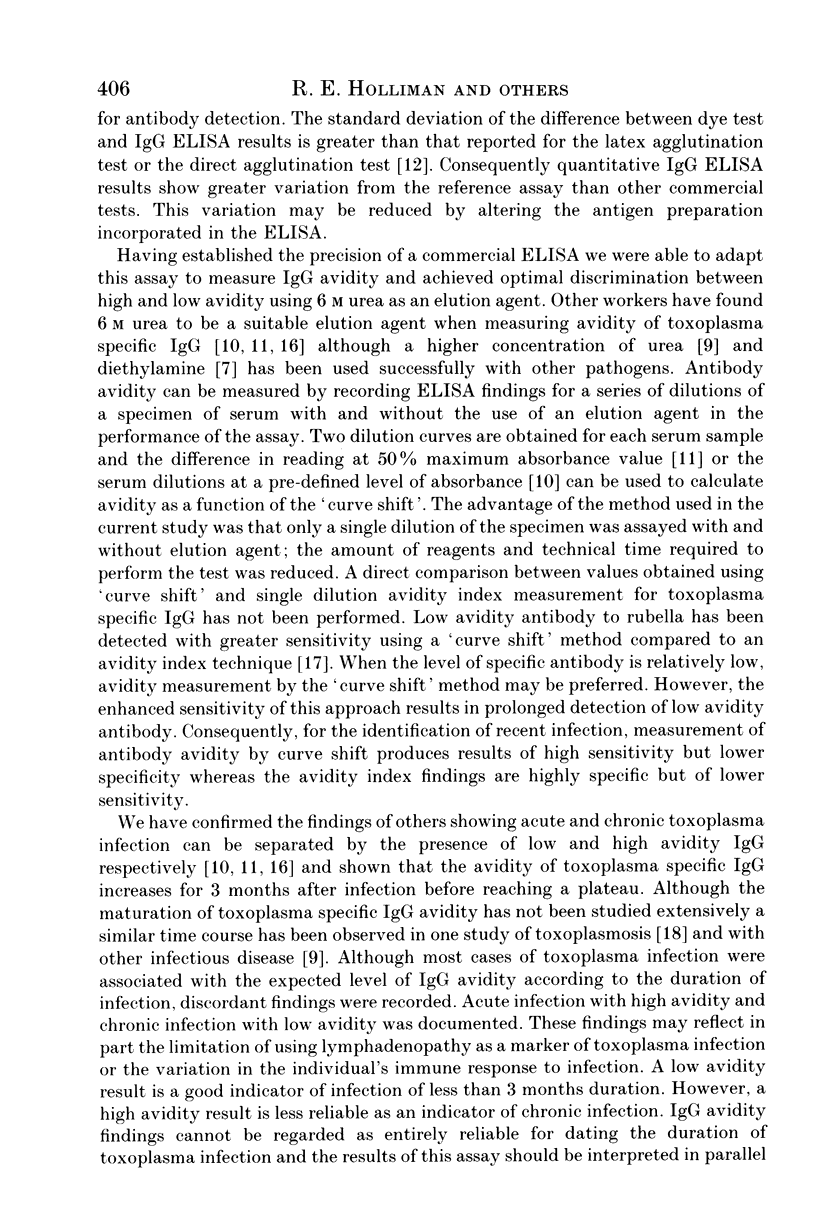
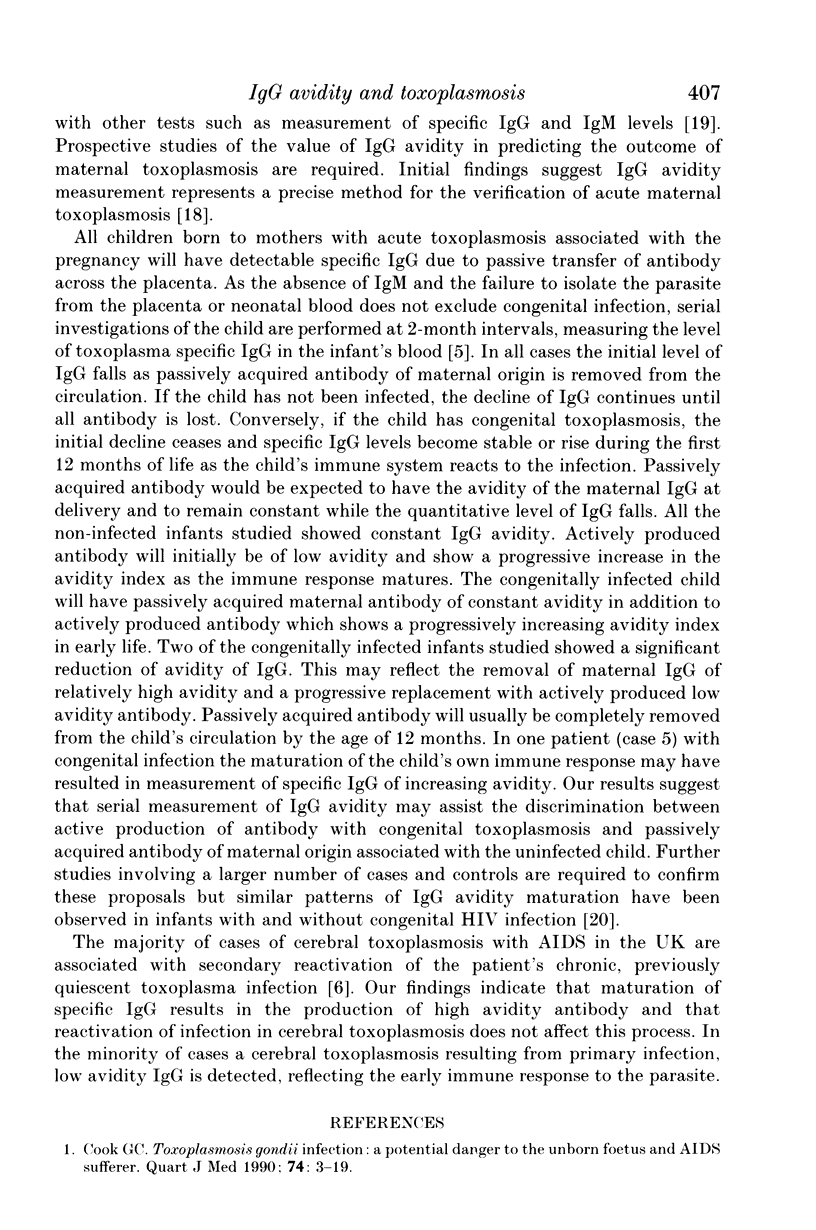
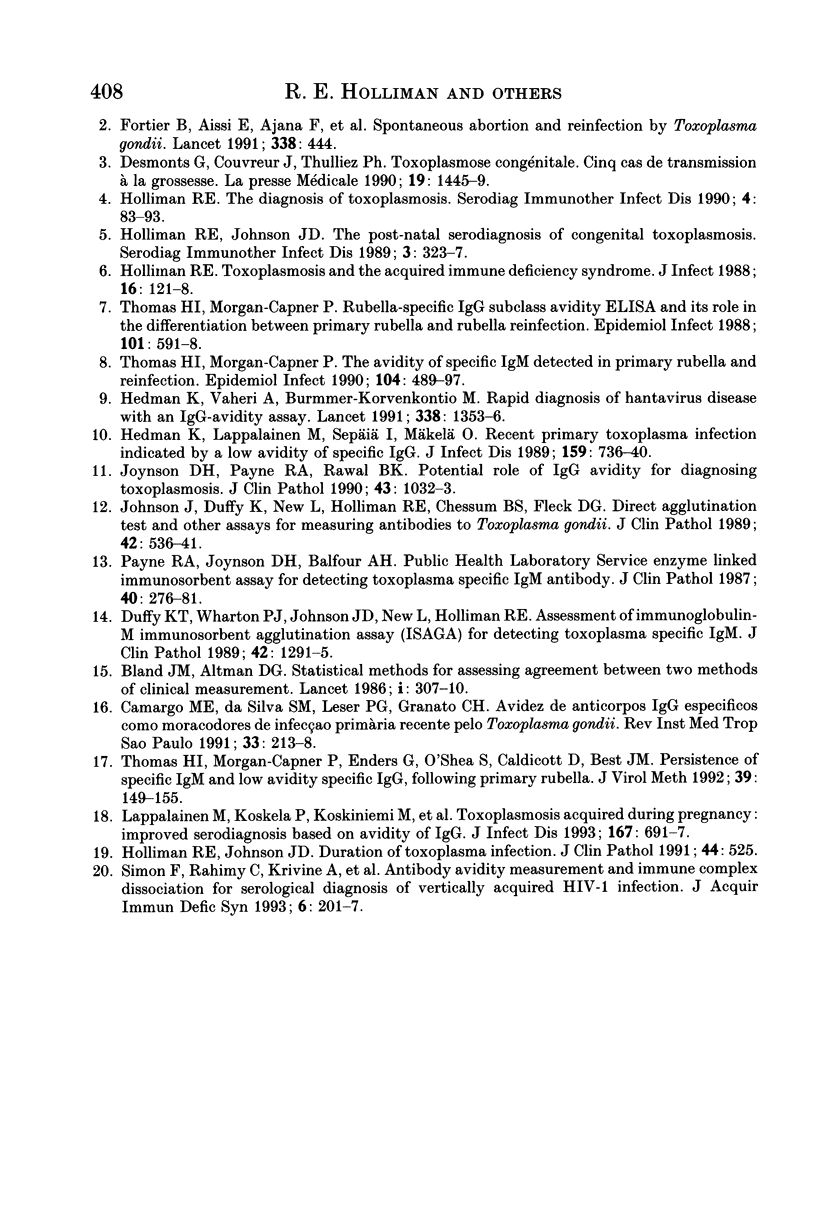
Selected References
These references are in PubMed. This may not be the complete list of references from this article.
- Bland J. M., Altman D. G. Statistical methods for assessing agreement between two methods of clinical measurement. Lancet. 1986 Feb 8;1(8476):307–310. [PubMed] [Google Scholar]
- Camargo M. E., da Silva S. M., Leser P. G., Granato C. H. Avidez de anticorpos IgG específicos como marcadores de infecço primária recente pelo Toxoplasma Gondii. Rev Inst Med Trop Sao Paulo. 1991 May-Jun;33(3):213–218. [PubMed] [Google Scholar]
- Cook G. C. Toxoplasma gondii infection: a potential danger to the unborn fetus and AIDS sufferer. Q J Med. 1990 Jan;74(273):3–19. [PubMed] [Google Scholar]
- Desmonts G., Couvreur J., Thulliez P. Toxoplasmose congénitale. Cinq cas de transmission à l'enfant d'une infection maternelle antérieure à la grossesse. Presse Med. 1990 Sep 29;19(31):1445–1449. [PubMed] [Google Scholar]
- Duffy K. T., Wharton P. J., Johnson J. D., New L., Holliman R. E. Assessment of immunoglobulin-M immunosorbent agglutination assay (ISAGA) for detecting toxoplasma specific IgM. J Clin Pathol. 1989 Dec;42(12):1291–1295. doi: 10.1136/jcp.42.12.1291. [DOI] [PMC free article] [PubMed] [Google Scholar]
- Fortier B., Aïssi E., Ajana F., Dieusart P., Denis P., Martin de Lassalle E., Lecomte-Houcke M., Vinatier D. Spontaneous abortion and reinfection by Toxoplasma gondii. Lancet. 1991 Aug 17;338(8764):444–444. doi: 10.1016/0140-6736(91)91064-2. [DOI] [PubMed] [Google Scholar]
- Hedman K., Lappalainen M., Seppäiä I., Mäkelä O. Recent primary toxoplasma infection indicated by a low avidity of specific IgG. J Infect Dis. 1989 Apr;159(4):736–740. doi: 10.1093/infdis/159.4.736. [DOI] [PubMed] [Google Scholar]
- Hedman K., Vaheri A., Brummer-Korvenkontio M. Rapid diagnosis of hantavirus disease with an IgG-avidity assay. Lancet. 1991 Nov 30;338(8779):1353–1356. doi: 10.1016/0140-6736(91)92235-t. [DOI] [PubMed] [Google Scholar]
- Holliman R. E., Johnson J. D. Duration of toxoplasma infection. J Clin Pathol. 1991 Jun;44(6):525–525. doi: 10.1136/jcp.44.6.525. [DOI] [PMC free article] [PubMed] [Google Scholar]
- Holliman R. E. Toxoplasmosis and the acquired immune deficiency syndrome. J Infect. 1988 Mar;16(2):121–128. doi: 10.1016/s0163-4453(88)93847-9. [DOI] [PubMed] [Google Scholar]
- Johnson J., Duffy K., New L., Holliman R. E., Chessum B. S., Fleck D. G. Direct agglutination test and other assays for measuring antibodies to Toxoplasma gondii. J Clin Pathol. 1989 May;42(5):536–541. doi: 10.1136/jcp.42.5.536. [DOI] [PMC free article] [PubMed] [Google Scholar]
- Joynson D. H., Payne R. A., Rawal B. K. Potential role of IgG avidity for diagnosing toxoplasmosis. J Clin Pathol. 1990 Dec;43(12):1032–1033. doi: 10.1136/jcp.43.12.1032. [DOI] [PMC free article] [PubMed] [Google Scholar]
- Lappalainen M., Koskela P., Koskiniemi M., Ammälä P., Hiilesmaa V., Teramo K., Raivio K. O., Remington J. S., Hedman K. Toxoplasmosis acquired during pregnancy: improved serodiagnosis based on avidity of IgG. J Infect Dis. 1993 Mar;167(3):691–697. doi: 10.1093/infdis/167.3.691. [DOI] [PubMed] [Google Scholar]
- Payne R. A., Joynson D. H., Balfour A. H., Harford J. P., Fleck D. G., Mythen M., Saunders R. J. Public Health Laboratory Service enzyme linked immunosorbent assay for detecting Toxoplasma specific IgM antibody. J Clin Pathol. 1987 Mar;40(3):276–281. doi: 10.1136/jcp.40.3.276. [DOI] [PMC free article] [PubMed] [Google Scholar]
- Simon F., Rahimy C., Krivine A., Levine M., Pepin J. M., Lapierre D., Denamur E., Vernoux L., De Crepy A., Blot P. Antibody avidity measurement and immune complex dissociation for serological diagnosis of vertically acquired HIV-1 infection. J Acquir Immune Defic Syndr. 1993 Feb;6(2):201–207. [PubMed] [Google Scholar]
- Thomas H. I., Morgan-Capner P., Enders G., O'Shea S., Caldicott D., Best J. M. Persistence of specific IgM and low avidity specific IgG1 following primary rubella. J Virol Methods. 1992 Sep;39(1-2):149–155. doi: 10.1016/0166-0934(92)90133-x. [DOI] [PubMed] [Google Scholar]
- Thomas H. I., Morgan-Capner P. Rubella-specific IgG subclass avidity ELISA and its role in the differentiation between primary rubella and rubella reinfection. Epidemiol Infect. 1988 Dec;101(3):591–598. doi: 10.1017/s0950268800029459. [DOI] [PMC free article] [PubMed] [Google Scholar]
- Thomas H. I., Morgan-Capner P. The avidity of specific IgM detected in primary rubella and reinfection. Epidemiol Infect. 1990 Jun;104(3):489–497. doi: 10.1017/s095026880004749x. [DOI] [PMC free article] [PubMed] [Google Scholar]


